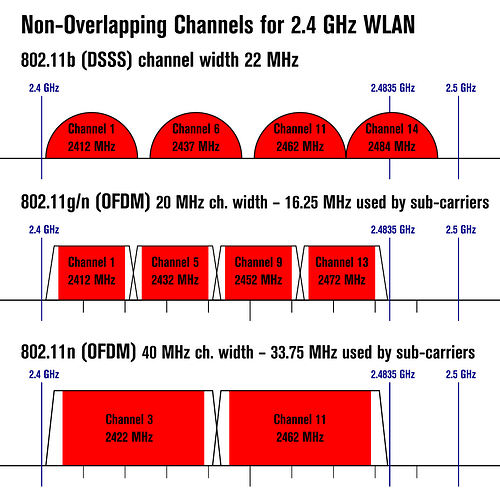There’s been a lot of discussion about Zigbee channel selection, with some saying it matters and some saying it doesn’t
In today’s increasingly crowded 2.4GHz environment, “it does matter” - and to add to the confusion, Zigbee channels overlap the wifi band, but use a different channel numbering
Zigbee channel 11 is approximately on top of Wifi channel 1, whilst Zigbee channel 25 is approximately a match for Wifi channel 13
It’s worth reading https://www.control4.com/docs/product/zigbee/best-practices/english/latest/zigbee-best-practices-rev-d.pdf
There’s also a good explanation of the issues at Metageek: https://support.metageek.com/hc/en-us/articles/203845040-ZigBee-and-WiFi-Coexistence
Zigbee coordinators tend to default to channel 11 - which is about the worst possible channel to use because most wifi routers tend to default to channel 1
Ideally, grab an android phone or something similar and use something like “Wifi Analyser” to work out what the strongest Wifi channels in your vicinity are, then set your zigbee channelling as far as possible from them, using advice from the two items above.
WIfi interference to your Zigbee network will result in paring taking minutes instead of seconds, devices getting disconnected and poor communications across the mesh
Unlike Wifi, Zigbee is not frequency agile - meaning that once you’ve set up a mesh on one channel, rechanneling requires manually resetting every single device on the mesh, instead of just changing the router channel.
[If you ever wondered why 2.4GHz Wifi has 13 channels when only 3 are actually ‘usable’, it’s because the ‘original’ Wifi was 1.6Mb/s Rangelan/Wavelan(the original 802.11 standard) and the 14 channels did work without interfering with each other
- all wifi channels are “usable”, but the “non-interfering” ones can operate in close proximity without slowing each other down
- the ACTUAL set of non-interfering wifi channels depends on the modulation method used and the bandwidth limit set (802.11n limited to 6Mb/s uses far less bandwidth than Rangelan as one example). The “standard set” are based on ‘worst case scenarios’ and should always give usable results
- it’s perfectly possible to operate adjacent wifi networks on the same channel, but they end up sharing the theoretical maximum bandwith (ie, it’s divided by the number of access points ‘within earshot’ of each other)
- ch14 is japan only and there’s another ham-only channel which people needn’t worry about.
- only 1-11 are “legally usable” in North America, but hams can use 12-14, so don’t assume they’ll be vacant
- ‘license-busting’ illegal firmware loads in wifi chipsets may be using other frequencies between 2.2 and 2.8GHz. These don’t concern us for this purpose…



